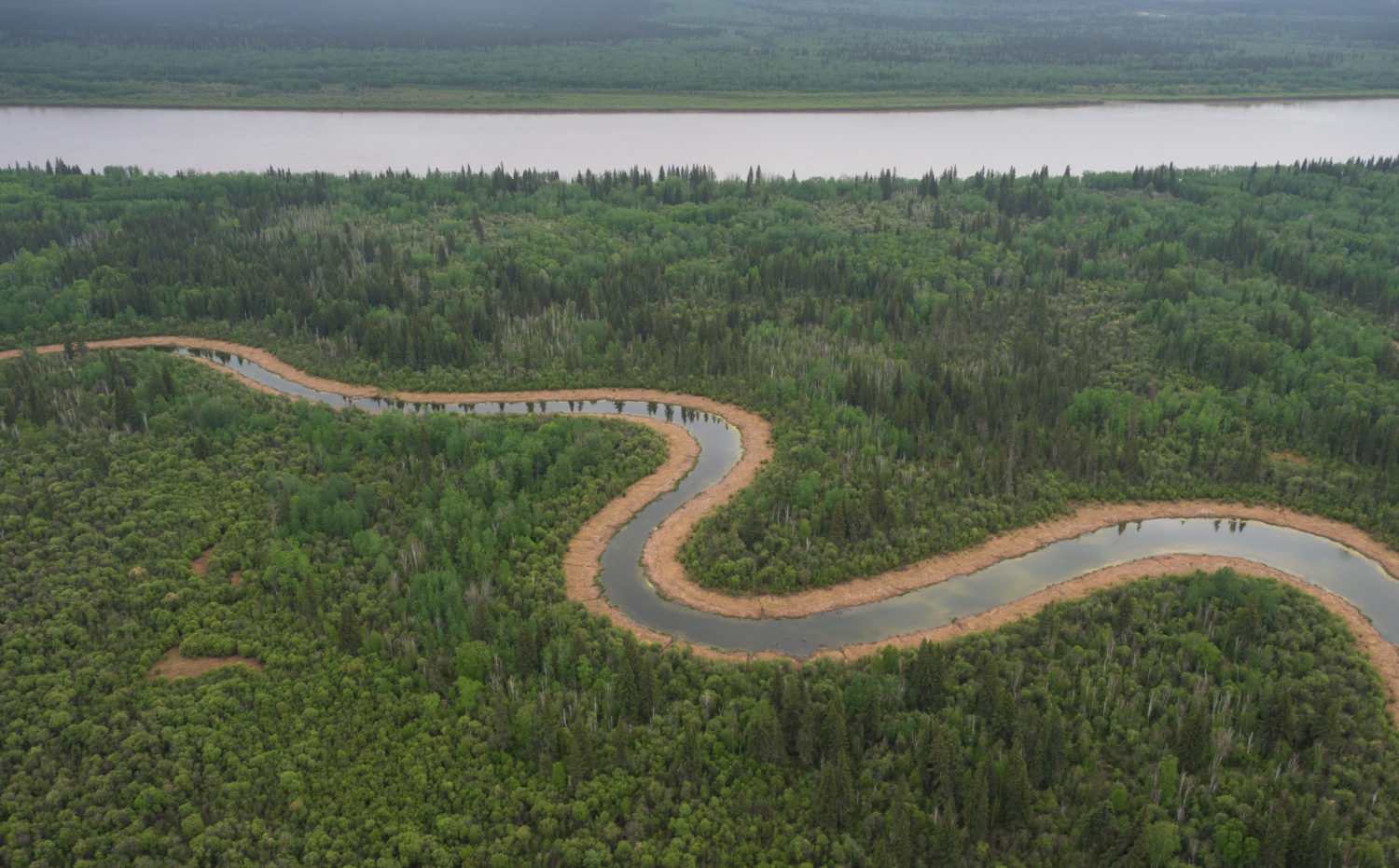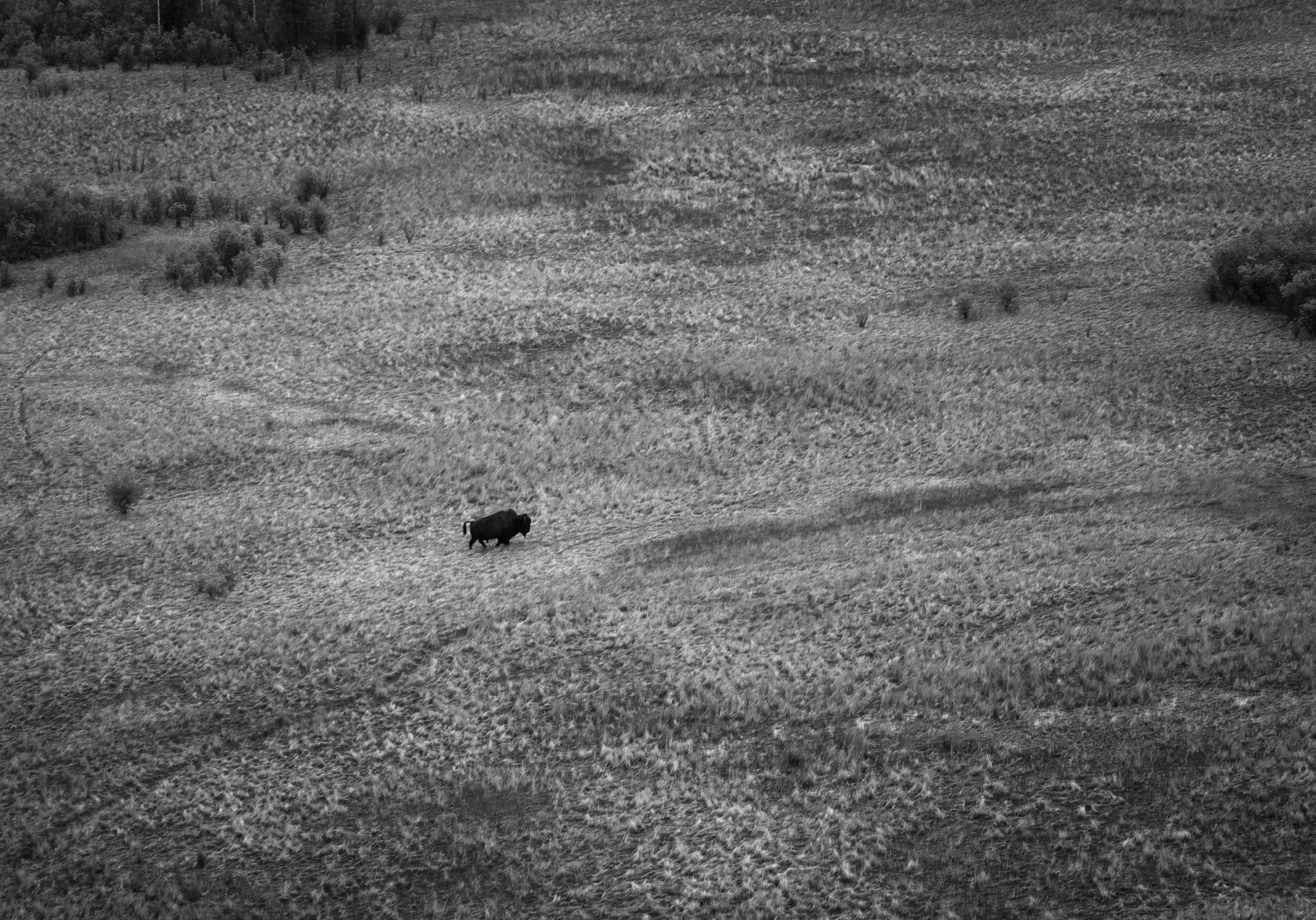
Celebrating 7 years of The Narwhal — and gearing up for the next 7
Between a fresh take on engagement and our new life on video, our team is...
A promise by the federal government to spend almost $60 million over three years implementing a plan to protect Wood Buffalo National Park is welcome news, but any success depends on where the money is spent and how decisions are made, say Indigenous and environmental groups.
Melody Lepine, Mikisew Cree First Nation director of government and industry relations, told The Narwhal that despite international scrutiny of the degradation of Wood Buffalo — Canada’s largest national park and a World Heritage site — there has been little action to alleviate threats from industrial development.
It is not known whether the action plan laid out Monday will be sufficient to save Wood Buffalo from being put on the United Nations Educational, Scientific and Cultural Organization’s (UNESCO) list of endangered World Heritage sites.
In 2014, Mikisew Cree handed a petition to UNESCO, which led to a Wood Buffalo National Park monitoring mission and a 2017 UN report that was highly critical of Canada’s protection of one of the world’s largest freshwater deltas. The report demanded “major and timely” responses to several recommendations that Canada work more closely with First Nations, improve monitoring of the delta and undertake a strategic risk assessment of the oilsands’ leaking tailings ponds.
The 44,000-square-kilometre park, home to one of the largest free-roaming wood bison herds in the world and the last remaining nesting ground of the endangered whooping crane, straddles the Northwest Territories-Alberta border and is suffering from dropping water levels in the Peace-Athabasca Delta and deterioration linked to climate change, hydro dams on the Peace River and pollution from the oilsands.
Lepine said the government’s new funding commitment is substantial, especially in addition to the 2018 funding package of $27.5 million to support the park over a five-year period. But she wants to know how that funding will be used to create change.
“This is a significant amount of funding, but the question we have is what does it mean? What is actually going to trickle down to make a difference on the ground,” Lepine said.
“They made that first announcement for $27.5 million, but what significant change did that bring? We hear these announcements, but we really don’t see any change on the ground,” she said.
Gillian Chow-Fraser, boreal program manager with Canadian Parks and Wilderness Society Northern Alberta, is relieved that the funding appears to show that, provided the cash lands in the right place, Canada is taking threats to the park seriously.
“We have been calling for more support and resources for the [Wood Buffalo] action plan for a long time,” said Chow-Fraser.
“I think this shows a significant commitment to recovering the health of the park, but it would be good to see a breakdown. … I think they are responding to a lot of frustration from Indigenous communities and local organizations. Wood Buffalo has been in decline for such a long time and the alarm bells have been ringing for just as long,” she said.

While advocates welcome the announcement of funding, they are urging the federal government to provide more specifics on how that money will result in tangible change on the ground. Photo: Louis Bockner / Sierra Club BC

Sunrise on Pine Lake in Wood Buffalo National Park. Photo: Louis Bockner / Sierra Club BC
The recurring question is where the money will go.
Jonathan Wilkinson, Minister of Environment and Climate Change and minister responsible for Parks Canada, said in a news release that the new $59.9 million injection of funds will help “ensure that Wood Buffalo National Park World Heritage Site remains a treasured place for present and future generations.”
But how the funds will help accomplish this goal in particular remains uncertain. The action plan outlines substantial partnership and monitoring activities, the creation of new training programs and conservation areas, a new Indigenous guardian program, a literature review on the impacts of industry on species and new mapping and spatial data analyses.
The activities proposed may quickly outstrip the amount of funding put forward. Alberta’s oilsands environmental monitoring program, for comparison, runs on a
More than half of the previously promised 142 actions within the plan are ongoing or already complete and the new money will help continue the work with Indigenous communities and the governments of Alberta and the Northwest Territories, Wilkinson said in the release.
Becky Kostka, Lands and Resources Manager for Smith’s Landing First Nation, said there has been no transparency on how the first lump of funding was spent.
“We have been asking them ever since they announced it for full transparency. We have been asking for budget reports on how that money was spent and we have received absolutely nothing,” she said.
The 11 Indigenous groups in the park were promised financial help in building capacity, but no information was given on how those decisions were being made, Kostka said.
“We don’t want these top-down sort of initiatives to continue to happen, especially when we are supposed to be working towards true co-management [of the park]. It’s hard when we are still having things dictated to us by Parks [Canada],” she said.

A river snakes through Wood Buffalo National Park. Advocates don’t want any more “top-down” initiatives from the government and are calling for true partnerships with Indigenous communities. Photo: Louis Bockner / Sierra Club BC
The action plan says all Wood Buffalo National Park staff have received training in reconciliation and there is a commitment to collaboration with Indigenous partners, but Smith’s Landing Chief Gerry Cheezie said that is not what he is seeing.
“We need more involvement from the community level. The top-down approach that they have been employing with Indigenous communities is not the way to go. They keep talking to us about reconciliation, partnerships and all these terms, but in actual fact they are not putting it into practice,” said Cheezie.
Lepine, who has made submissions to the World Heritage Committee, said the committee made it plain during an annual meeting in Azerbaijan last year that it was giving a final warning to Canada to get its act together.
The initial report submitted last year was seen as inadequate, with UNESCO asking Canada to report back this month with more information on issues such as the effect of Peace River dams, including Site C, and pollution from the oilsands.
“Considerably more effort will be needed to reverse the negative trends at a time when climate change, combined with upstream industrial developments and resource extraction are intensifying,” said a draft committee report.

The 44,000-square-kilometre park is suffering from deterioration linked to climate change, hydro dams and pollution from the oilsands. Photo: Louis Bockner / Sierra Club BC.
Lepine said action is needed to avoid the endangered listing.
“And have they taken that seriously? Here we are in December with Canada submitting a late report and we have seen little action taken,” she said.
The new report on the state of Wood Buffalo National Park conservation was due on Dec. 1. Canada was forced to ask for an extension and, although the report is dated Dec. 1, it was not submitted until Dec. 21.
A UNESCO spokesperson said Wood Buffalo will be examined by the World Heritage Committee at a meeting in Fuzhou, China, next summer.
According to the federal government’s press release, remaining initiatives in the action plan that haven’t been deployed yet include “strengthening park management in collaboration with Indigenous partners, enhancing research, monitoring and management of the Peace-Athabasca Delta using science and Indigenous knowledge and establishing new mechanisms to support improved water management in the Peace-Athabasca Delta,” says the news release.
The use of weirs and other “water control structures” are being evaluated, but the plan remains vague on key issues such as the effect on the delta of the Site C dam.
A longer-term modelling effort is now underway, the plan says, but a letter to the World Heritage Committee from Indigenous communities and environmental organizations points to problems such as profound geotechnical troubles with Site C.
“With Site C’s future appearing problematic and risky and imminent river diversion scheduled, government attention must urgently refocus on working with BC Hydro to determine protocols for timed releases of water to re-create the necessary natural water regimes in the Peace-Athabasca Delta system,” the letter reads.

Alberta’s oilsands north of Fort McMurray. A recent report showed that tailings ponds near Wood Buffalo National Park are leaking. Photo: Louis Bockner / Sierra Club BC
One of the most fraught issues is the effect of toxic tailings ponds on water within the park, a concern exacerbated by an international report showing that tailings ponds near the Athabasca River are leaking.
The Wood Buffalo action plan points to the oil sands monitoring program, jointly managed by Alberta and the federal government, which it says will “ensure that the influence of tailings water on aquatic systems will be detected.”
Alberta is also working with Indigenous community representatives to initiate a systemic tailings pond risk assessment, it says.
But communities such as Smith’s Landing say there is growing concern that the federal and Alberta governments are looking at actions such as treating tailings pond effluent and allowing companies to release it into the Athabasca River.
“That is not OK with us,” Kostka said.
“We are pushing the province of Alberta to look at large, cumulative downstream effects modelling. We don’t want to see anything in the Peace-Athabasca Delta, so we have to come back to this work with Wood Buffalo and Parks Canada and say ‘you guys really have to make this happen.’”
Get the inside scoop on The Narwhal’s environment and climate reporting by signing up for our free newsletter. On a warm September evening nearly 15...
Continue reading
Between a fresh take on engagement and our new life on video, our team is...

The public has a few days left to comment on Doug Ford’s omnibus development bill....

115 billion litres, 70 years to fix, $5.5 billion in lawsuits
